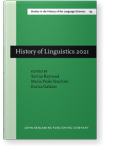Chapter 11
How far are the horizons of descriptive linguistics?
European missionaries engaged in the linguistic description of 16th–18th c. Tamil Nadu discussed
two possible attitudes. Proença (1625–1666), who wrote in Portuguese, thought that the most important task was to
concentrate on what is useful pera a pratica “for practical purposes” and wanted to master ordinary
language, both (A) in its colloquial forms — including substandard and dialectal variants — and (B) in its more
standardized form. Beschi (1680–1747), who wrote in Latin, thought he could become influential by mastering (C)
Centamiḻ, the poetic “more elegant” dialect, cultivated for many centuries by traditional
grammarians and poets of Tamil Nadu. This article evokes the strategies of Proença, Beschi and others, who navigated
the components of Tamil “triglossia”, in which both (A) and (C) can coexist with (B), but not simultaneously. Either
(C) is ignored, being considered as “useless for practical purposes”, or (A) is shunned, being considered as
“barbaric”.
Article outline
- 1.Accessibility of a forgotten ancient new world of linguistic descriptions
- 2.There is more than one variety of Tamil
- 3.The Tamil linguistic hierarchy
- 4.From the age of AB to the age of BC, and back: “Calculemus!”
- 5.How far is the horizon of descriptive linguistics?
- Dedication
-
Notes
-
Bibliography
This content is being prepared for publication; it may be subject to changes.
